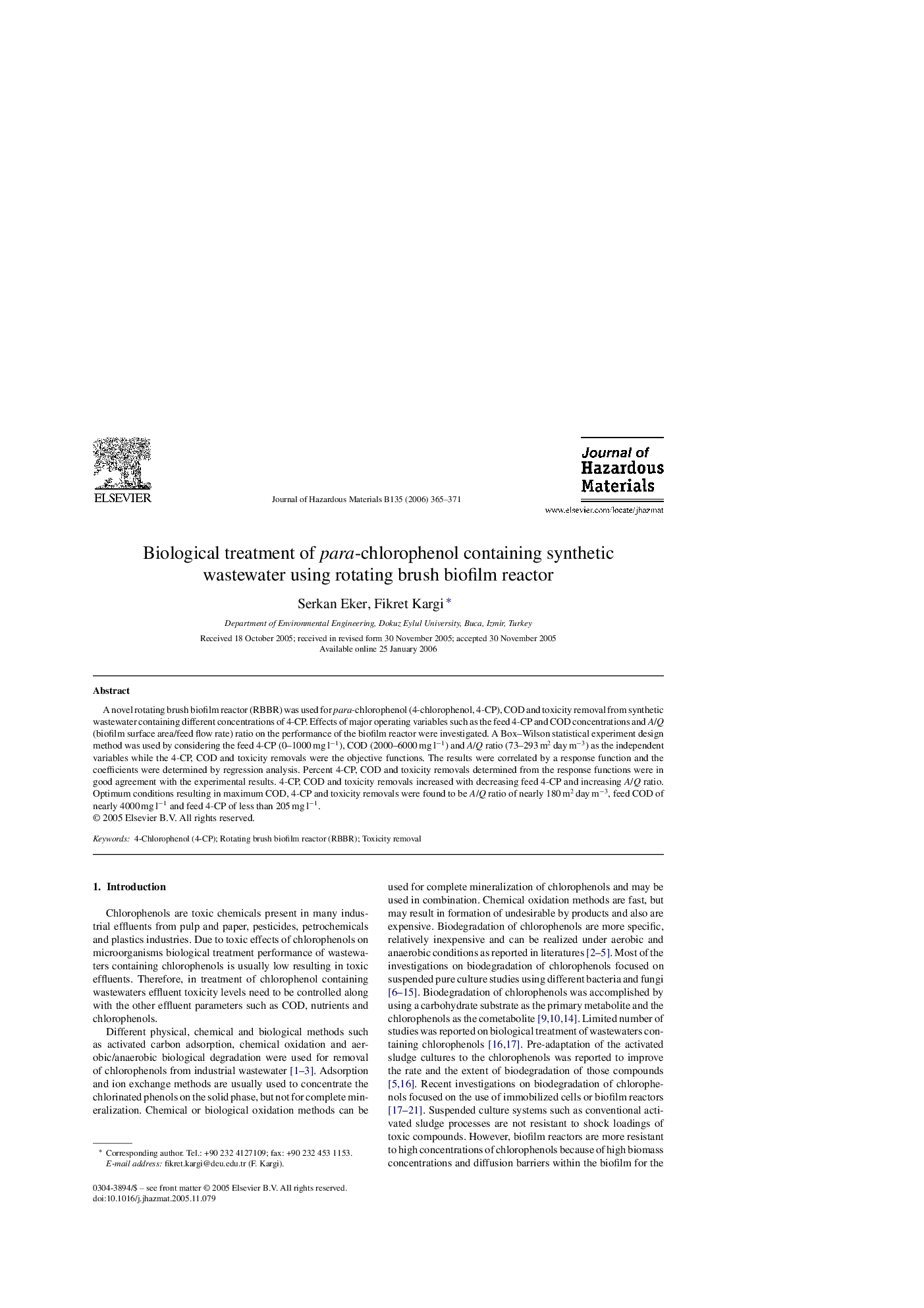| Article ID | Journal | Published Year | Pages | File Type |
|---|---|---|---|---|
| 585767 | Journal of Hazardous Materials | 2006 | 7 Pages |
Abstract
A novel rotating brush biofilm reactor (RBBR) was used for para-chlorophenol (4-chlorophenol, 4-CP), COD and toxicity removal from synthetic wastewater containing different concentrations of 4-CP. Effects of major operating variables such as the feed 4-CP and COD concentrations and A/Q (biofilm surface area/feed flow rate) ratio on the performance of the biofilm reactor were investigated. A Box-Wilson statistical experiment design method was used by considering the feed 4-CP (0-1000 mg lâ1), COD (2000-6000 mg lâ1) and A/Q ratio (73-293 m2 day mâ3) as the independent variables while the 4-CP, COD and toxicity removals were the objective functions. The results were correlated by a response function and the coefficients were determined by regression analysis. Percent 4-CP, COD and toxicity removals determined from the response functions were in good agreement with the experimental results. 4-CP, COD and toxicity removals increased with decreasing feed 4-CP and increasing A/Q ratio. Optimum conditions resulting in maximum COD, 4-CP and toxicity removals were found to be A/Q ratio of nearly 180 m2 day mâ3, feed COD of nearly 4000 mg lâ1 and feed 4-CP of less than 205 mg lâ1.
Related Topics
Physical Sciences and Engineering
Chemical Engineering
Chemical Health and Safety
Authors
Serkan Eker, Fikret Kargi,
